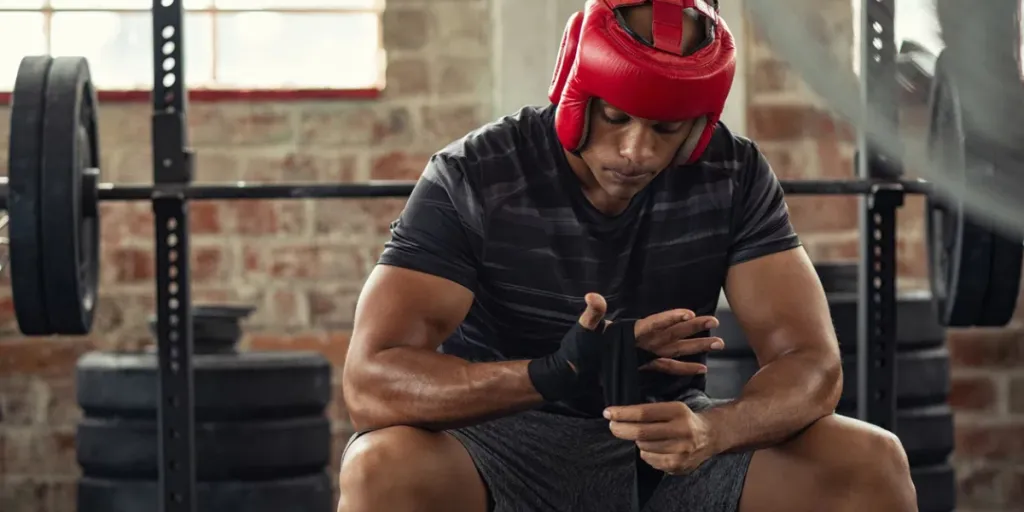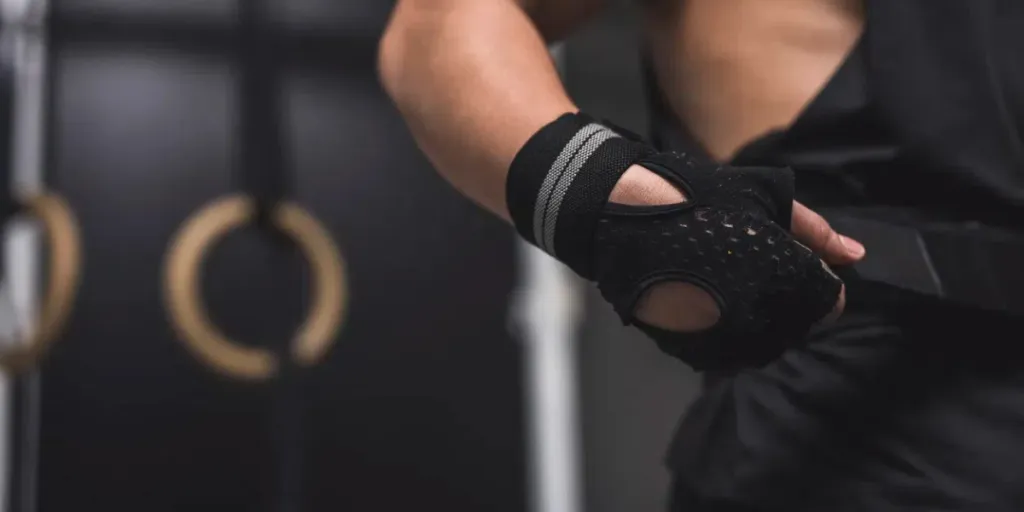Lifting straps have become an essential accessory for fitness enthusiasts and professional athletes alike. These straps are designed to enhance grip strength, reduce fatigue, and improve overall lifting performance. As the demand for fitness equipment continues to rise, the lifting strap market is experiencing significant growth. This article delves into the current market dynamics, key players, and regional trends shaping the future of lifting straps.
Table of Contents:
– Market Overview
– Materials and Design Innovations
– Technological Features and Advancements
– Benefits and Performance Enhancements
– Target Audience and Market Segmentation
Market Overview

Current Demand and Growth
The lifting strap market has seen a substantial increase in demand, driven by the growing popularity of weightlifting and strength training. According to a report by Research and Markets, the global fitness equipment market is expected to reach USD 15.2 billion by 2025, with a significant portion attributed to accessories like lifting straps. This growth is fueled by the increasing awareness of fitness and health, as well as the rise in the number of gyms and fitness centers worldwide.
The market for lifting straps is also benefiting from the trend of home workouts, which gained momentum during the COVID-19 pandemic. As more people invest in home gym setups, the demand for high-quality lifting accessories has surged. The market is projected to grow at a compound annual growth rate (CAGR) of 7.5% from 2023 to 2030, indicating a robust future for lifting straps.
Key Players and Competitive Landscape
The lifting strap market is highly competitive, with several key players dominating the landscape. Companies such as Rogue Fitness, Harbinger, and Schiek Sports have established themselves as leaders in the industry, offering a wide range of lifting straps designed for different levels of users. These companies are known for their innovative designs, high-quality materials, and strong brand reputation.
Rogue Fitness, for instance, has gained a significant market share by continuously introducing new products and improving existing ones. Their lifting straps are favored by professional athletes and fitness enthusiasts for their durability and performance. Harbinger, another major player, focuses on ergonomic designs that enhance comfort and safety during heavy lifting. Schiek Sports, known for its patented designs, offers lifting straps that cater to both beginners and advanced lifters.
The competitive landscape is also characterized by the presence of several smaller, niche brands that cater to specific segments of the market. These brands often focus on unique features, such as eco-friendly materials or customizable designs, to differentiate themselves from the larger players.
Regional Insights and Trends
The lifting strap market exhibits distinct regional trends, influenced by varying levels of fitness awareness, economic conditions, and cultural factors. North America, particularly the United States, is the largest market for lifting straps, driven by a high number of fitness centers and a strong culture of weightlifting. According to a report by Research and Markets, the North American fitness equipment market is expected to grow at a CAGR of 6.8% from 2023 to 2030.
Europe is another significant market, with countries like Germany, the United Kingdom, and France leading the way. The European market is characterized by a growing emphasis on health and wellness, supported by government initiatives and increasing disposable incomes. The Asia-Pacific region is witnessing rapid growth, fueled by rising fitness awareness and the expansion of gym chains in countries like China, India, and Japan. The market in this region is expected to grow at the highest CAGR of 8.2% during the forecast period.
In contrast, the lifting strap market in Latin America and the Middle East & Africa is still in its nascent stages but holds significant potential for growth. Increasing urbanization, rising disposable incomes, and a growing interest in fitness are expected to drive demand in these regions.
Materials and Design Innovations

High-Quality Materials for Enhanced Durability
Lifting straps have evolved significantly in terms of the materials used, ensuring they can withstand the rigors of intense weightlifting sessions. High-quality materials such as nylon, cotton, and leather are commonly used due to their durability and strength. Nylon, for instance, is known for its high tensile strength and resistance to abrasion, making it an excellent choice for lifting straps. Cotton, on the other hand, offers a softer feel and better breathability, which can enhance comfort during prolonged use. Leather, while less common, provides a premium feel and exceptional durability, often favored by professional athletes for its robustness.
The integration of advanced materials has also led to the development of lifting straps that are not only durable but also lightweight. This is crucial as it reduces the overall weight that athletes have to manage, allowing them to focus more on their lifting technique and performance. The use of high-strength materials like Spectra and Vectran in climbing harnesses has shown similar benefits, providing both durability and lightweight properties. This trend is mirrored in the design of lifting straps, where the balance between strength and weight is critical.
Ergonomic Designs for Maximum Comfort and Safety
Ergonomic design is another area where lifting straps have seen significant innovation. The goal is to create straps that conform to the natural movements of the body, reducing the risk of injury and enhancing comfort. Ergonomic designs often feature padded wrist areas to prevent chafing and discomfort, which is particularly important during long lifting sessions. The importance of ergonomic design is highlighted in the trekking pole industry, where grips with a slight forward angle are designed to mimic the natural resting position of the hands, reducing fatigue and improving comfort.
Moreover, adjustable features are becoming more common in lifting straps, allowing users to customize the fit to their specific needs. This is akin to the adjustable wrist straps found in high-quality trekking poles, which can be tweaked for a perfect fit on the trail. Such customization options are essential for ensuring that the straps provide the necessary support without compromising on comfort.
Technological Features and Advancements

Smart Lifting Straps with Integrated Sensors
The integration of technology into lifting straps is a game-changer, bringing a new level of sophistication to the fitness industry. Smart lifting straps equipped with integrated sensors can monitor various metrics such as grip strength, lifting duration, and repetitions. These sensors provide real-time feedback to the user, helping them optimize their performance and prevent overtraining. This technological advancement is similar to the innovations seen in climbing harnesses, where split-webbing designs and advanced materials like Dynex are used to enhance performance and comfort.
The data collected by these smart straps can be synced with fitness apps, allowing users to track their progress over time. This feature is particularly beneficial for professional athletes and serious fitness enthusiasts who rely on detailed performance data to fine-tune their training regimens. The use of technology in lifting straps is still in its early stages, but the potential for growth and innovation is immense.
Customization Options for Personalized Performance
Customization is a key trend in the fitness industry, and lifting straps are no exception. Modern lifting straps offer a range of customization options, from adjustable lengths to personalized padding. This allows users to tailor the straps to their specific needs, ensuring maximum comfort and effectiveness. The importance of customization is evident in the design of climbing harnesses, where features like adjustable waist and leg buckles are crucial for achieving the perfect fit.
In addition to physical adjustments, some lifting straps also offer aesthetic customization options. Users can choose from a variety of colors and patterns, allowing them to express their personal style while working out. This trend towards personalization is driven by the growing demand for fitness products that are not only functional but also visually appealing.
Benefits and Performance Enhancements

Improved Grip and Reduced Fatigue
One of the primary benefits of using lifting straps is the improved grip they provide. This is particularly important for exercises like deadlifts and pull-ups, where grip strength can be a limiting factor. By securing the wrists to the bar, lifting straps allow users to lift heavier weights without worrying about their grip giving out. This leads to more effective workouts and better overall performance.
In addition to improving grip, lifting straps also help reduce fatigue. By taking some of the strain off the hands and forearms, they allow users to focus more on their target muscles. This is similar to the benefits seen with ergonomic trekking poles, which reduce arm fatigue by providing a more natural grip position. The combination of improved grip and reduced fatigue makes lifting straps an essential tool for anyone looking to enhance their lifting performance.
Enhanced Lifting Capacity and Safety
Lifting straps also play a crucial role in enhancing lifting capacity and safety. By providing additional support to the wrists, they help prevent injuries that can occur from overexertion or improper form. This is particularly important for heavy lifting, where the risk of injury is higher. The use of high-quality materials and ergonomic designs further enhances the safety and effectiveness of lifting straps.
The benefits of enhanced lifting capacity and safety are supported by data from various studies. For example, a study on the use of wrist straps in weightlifting found that they significantly reduced the risk of wrist injuries and improved overall lifting performance. This highlights the importance of using well-designed lifting straps to achieve optimal results while minimizing the risk of injury.
Target Audience and Market Segmentation

Wholesalers and Retailers
The market for lifting straps is diverse, with a wide range of potential customers. Wholesalers and retailers are a key segment, as they play a crucial role in distributing lifting straps to gyms, fitness centers, and individual consumers. These businesses are always on the lookout for high-quality products that can meet the demands of their customers. By offering lifting straps that combine durability, comfort, and advanced features, manufacturers can tap into this lucrative market.
Fitness Enthusiasts and Professional Athletes
Fitness enthusiasts and professional athletes represent another important market segment for lifting straps. These individuals are highly motivated and often invest in the best equipment to enhance their performance. They value products that offer superior quality, innovative features, and the ability to customize their workout experience. By targeting this segment, manufacturers can build a loyal customer base and drive long-term growth.
Conclusion
The lifting strap industry is experiencing a period of rapid innovation, driven by advancements in materials, design, and technology. High-quality materials and ergonomic designs are enhancing durability and comfort, while smart features and customization options are taking performance to new heights. These innovations are not only improving the effectiveness of lifting straps but also making them more appealing to a diverse range of customers. As the industry continues to evolve, the future looks bright for lifting straps, with endless possibilities for further advancements and growth.





 বাংলা
বাংলা Nederlands
Nederlands English
English Français
Français Deutsch
Deutsch हिन्दी
हिन्दी Bahasa Indonesia
Bahasa Indonesia Italiano
Italiano 日本語
日本語 한국어
한국어 Bahasa Melayu
Bahasa Melayu മലയാളം
മലയാളം پښتو
پښتو فارسی
فارسی Polski
Polski Português
Português Русский
Русский Español
Español Kiswahili
Kiswahili ไทย
ไทย Türkçe
Türkçe اردو
اردو Tiếng Việt
Tiếng Việt isiXhosa
isiXhosa Zulu
Zulu